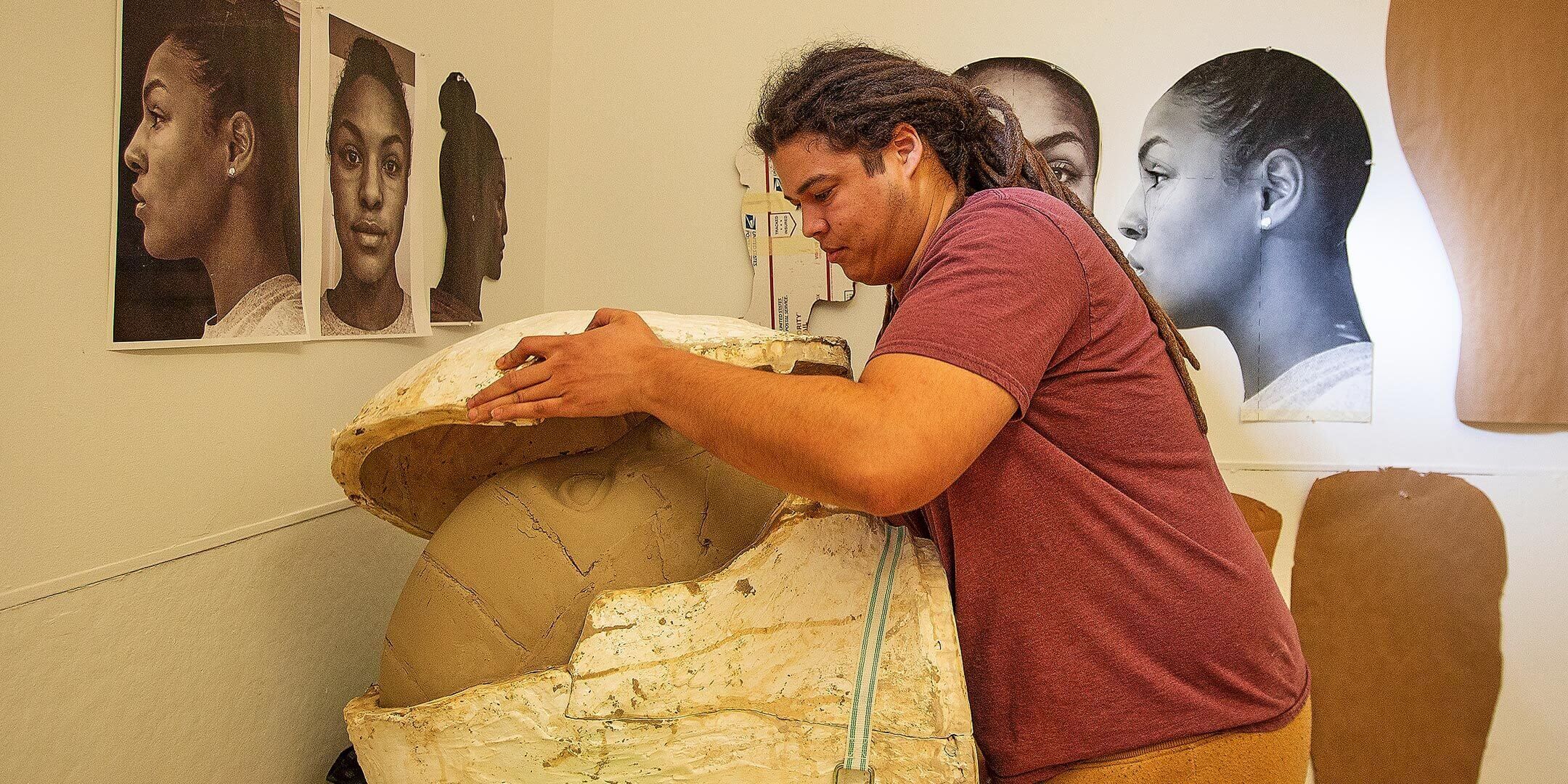At 30, Isaac Scott ’14 has done a lot. He’s a ceramist, a graduate student at Temple University, and a prolific photographer who is dedicated to “bringing the monumental into everyday life.” Themes of race frequently make their way into his work — Scott identifies as a Black man, and he’s currently reimagining the Forward statue at the state capitol as one of a Black woman. Arguably his most renowned project is his collection of photos of the 2020 Philadelphia protests following the death of George Floyd, which landed him a feature in the New Yorker last year.
Badger Vibes: How did your photos go from your Instagram to the New Yorker?
Isaac Scott: I started posting all my images, just kind of to inform the public. I was going up like every other day, or sometimes multiple days in a row, to protests going on. And then, one day, the director of photography at the New Yorker just DM’d me on Instagram and was like, “Hey, can we talk about photos?” And that was on a Monday, and the article was out a day or two later.

What was your goal with the photographs?
I tried to bring a sense of humanity to the [protestors], and to basically bring the narrative and the story that I was experiencing on the front lines of the movement to people who maybe don’t see that side of the movement. [Most often,] you get one storyline, but you don’t actually see up close with the people and what they’re going through on the streets. And these important documents tell that story.
So, is humanity a focal point in a lot of the work you do?
I feel like the essential aspect of who we all are is what I like to focus on, whether I’m talking about my personal experiences or the Black experience in this country. I really want people focused on humanity and people, and less on rhetoric or talking points.

You’re doing a project to reimagine Forward — a statue at the Wisconsin state capitol. Can you tell me more about that?
I’m working on a sculpture that’s re-creating the statue at the capitol. I’m using my little sister, Sophia, as a model for that sculpture. This is a symbol of the state … that’s supposed to represent everybody and our values and things like that. And it’s also kind of like this focal point of the city, the cultural center of the city, the financial center of the city as well as the state. And I imagine like a 10-foot-tall golden white woman … and I was thinking, “What would happen if that woman was a Black person with facial features like mine?”
Does your philosophy major tie into your work as an artist?
Tangentially, maybe not directly. It’s not like I draw [from] specific philosophers like “this is what I’m making my work around.” I feel like [philosophy is] a great way to develop a tool of critical thinking and talking and organizing your ideas and thoughts and stuff like that, in a way that you can put them together and deliver them in a way that is understandable and consumable.
What was your experience like as a Black student on the UW campus?
I think it’s very difficult. And I was very fortunate because I was an [UW DoIT’s Information Technology Academy] in high school. When you’re in that program, you get mentors, you get access to different things to make sure that you actually make it to [the UW and then] to graduation. I actually failed out after like my sophomore year, and I went to [Madison College] for a year, and then got back and finished with a philosophy degree. And I think it's a very daunting place sometimes to be in.
Then I was also in the marching band for four years. And that was just a hyper-white space. I had one aspect of wanting to be a part of something, but other aspects just felt like sometimes not always a space where I felt completely welcomed. You know, I made it through, and it worked out. And I look back and I enjoyed my time at the UW, but I think there’s a lot that can be improved by the culture that is created.
Interview condensed and edited for clarity by Chelsea Rademacher ’13.
This story originally appeared in the June 2021 issue of Badger Vibes. Learn more about this monthly email newsletter from WAA, and sign up for the mailing list.










